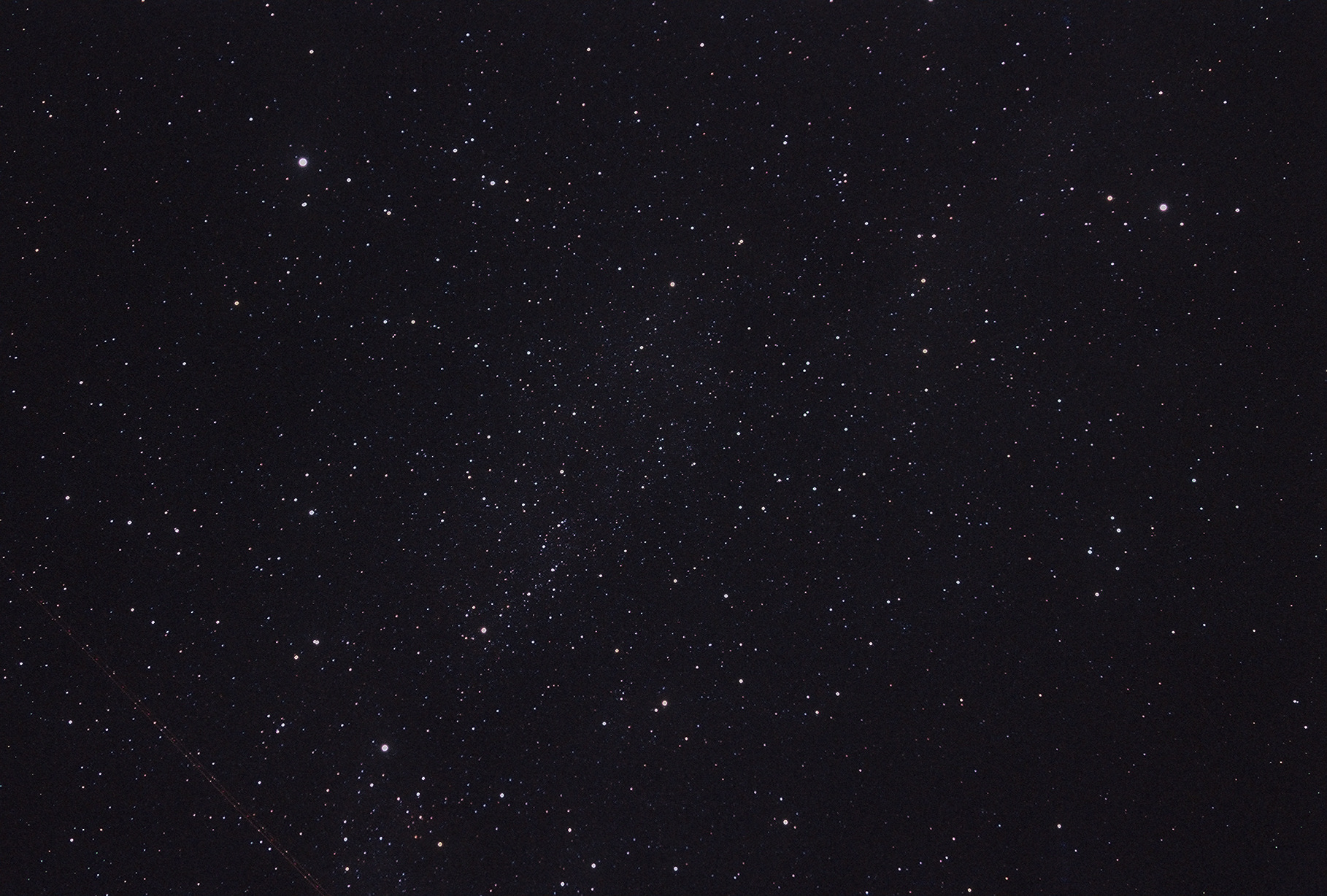 |
My setup for this year includes the C8 mounted on my baby
blue Pieramyd mount, the box for the scope underneath, the power unit atop
that and the eyepiece case I built. |
 |
A shot down the row of telescopes, starting at mine. My scope
is aimed at Jupiter and tracking. Note the other computer driven scopes
pointed at random around the sky, and their operators gathered in a group
talking. :-)
To be fair though, it is fairly early, as can be seen by the Sun being up and the lack of scopes around. They managed to
find it eventually. |
 |
Scopes right to left-20" Obsession, 11" C11 GPS, 5" Williams
Optics refractor, 14" homemade Dob, 8" Meade LX90.. |
 |
Scopes right to left-Dennis Young's 28" reflector. (Contrary
to the sign, it's not a 36" mirror.) Next, a 12" home made job by Brent
Archinal, in the red shirt, who works for the USGS. Hiding behind Doug in
the blue hat is a Doug with his 10" Orion Dob, next is an 18" custom equatorial
Newt. |
 |
The view from Cliff Creek turnout on the east rim between
the transfer point and the Kaibab Trailhead. |
 |
A cliff seen at Hopi Point on the west rim. There's no way
to actually judge the scale you see here. Just keep in mind, the tree on
the end of the point is ~10 feet below where you could safely stand, and
is 20 feet high. The small white dots appearing below the tree line and
above the cliffs are people. |
 |
A shot of the river facing west from Hopi Point. |
 |
Each year, I take a shot I call, "The Brink Of Death". This
is this years' rendition. It was taken on the trail between the Powell Memorial
and Hopi Point. Most times, the image is an illusion-taken at such an angle
that it looks like if I slip, I'll fall to my death. This year, however,
there actually is a 900 foot minimum vertical drop at my feet. |
 |
Five minute exposure of the Summer Triangle from Yavapai
Point at about 2 am. Piggybacked on the C8 with Fuji 400ISO slide film in
a Canon FTb body at F/2.6.
Alberio is split and the Coathanger Cluster is visible, along with all of Cygnus, Lyra and Delphinus, with Altair in Aquila. Note
that Epsilon Lyrae is elongated. Just slightly out of focus, though. |
. |
. |
| . |
. |
| . |
. |
 |
| The magnificence of the Grand Canyon cannot be overestimated. This is the view
from Mather Point, the first spot many tourist buses visit. More on this later. |
 |
| This was our campsite for the week. You can just see Rosie inside the mess tent on
the right. |
 |
Here's the observing field, below the parking lot at Yavapai Point. Left to right,
we have Mike Spooners telescopes starting with his 17" Dob, an 8" "Scope-on-a-stick", then
my C8 on the "Pieramyd mount", another C8 I ran that belongs to a friend in front of Mike's
9" folded refractor. Next, in the bag, is a C-14, then a 12" Newt that had a lot of problems
with the cover blowing off in the wind. There were more off to the right, but this was all I
could fit in this frame.
Many of the heavy hitters set up here because it's darker than
the lot. Actually, the biggest scopes set up in the parking lot because there are more people, (see that dead tree on the right
in the background? It's next to the sidewalk around the parking lot...) but you can never seem to get dark adapted up there,
what with the cars coming and going. I plan to change that this year by lining the path to the field with some low voltage red
lights. We'll see how it works. |
 |
| This is the setup we used to observe sunspots during the day. We set up there on 3 different days, with one day at Yavapai point.
This was just about the most fun I've ever had with my clothes on! People from all over the world stop at Mather Point. It's usually
their first view of the canyon. Many can not speak English, and tour guides generally translate. I made a sketch of the sunspot
pattern and posted it. Some of the tour guides wrote translations on it for their particular croud. By the end of the day, we had
5 different languages on that sketch! Most of the time though, at least one person did
speak English. We'd explain what they were seeing to them and they would actually go to the
point, drag back a bunch of their fellow travelers and show them the sunspots and explain it.
It was great! On one day, we had well over 1,000 people look through the scope. I could go
on and on... |
















 Page URL: http://www.stargazing.net/Astroman/starparties.html
Page URL: http://www.stargazing.net/Astroman/starparties.html